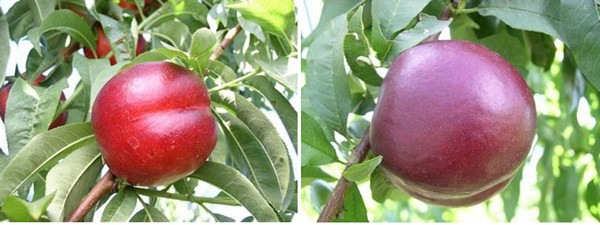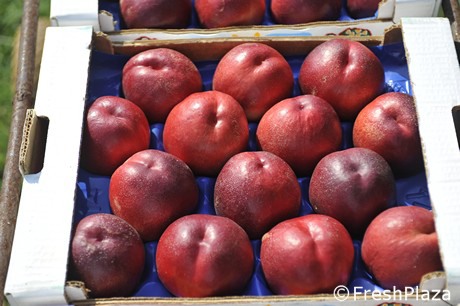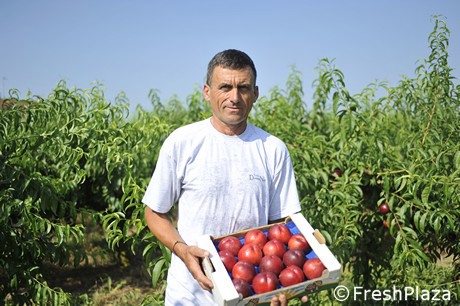Despite a not very positive year, the market for peach and nectarine plants shows a certain vivacity. So says the nurseryman Daniele Neri who, however, states: "They do not look for any plants, suggested by others, with varieties imposed by others. Entrepreneurs want to play it safe, as far as possible, when it comes to open field cultivation. But to play it safe means choosing varieties that offer tasty and good-sized fruits".

Romagna Big, on the left, and Romagna Star.
The medium-early period, from late June to early July for the centre-north, is not to be neglected. Daniele Neri has in his catalog Romagna Red, Romagna Star and Romagna Big. The first two are white-pulp nectarines, the third one has a yellow pulp.

Romagna Red.
"White pulp is increasingly in demand - he adds - the important thing is that it tastes and smells good. And, I would add, that it is cultivated properly, without too much water, without too much fertigation, with balanced pruning and strong thinning. Most importantly, it has to be collected at the right time, not in advance".
"Romagna Red is very good for taste - says Neri - for this reason those who sold it packaged obtained high prices compared to the average of similar products of poor taste and size. But also the farmer who collects in bins, if he knows what he's doing, can get an average PLV of 18 thousand euros per hectare. It's all about producing a good caliber and Romagna Red is great in this regard".

Daniele Neri with a box of Romagna Red gathered last summer.
For all three varieties, agronomic precautions are required. Neri recommends pruning and thinning: the key is working with precision. "If on a plant we have 100 fruits of the A caliber, or 50 of the AAA caliber, the total weight is similar, but the price per kg is double. We spend more on thinning to eliminate more fruits, but we save money when it comes to harvesting. And the PLV goes up a lot. Unfortunately everyone knows this in theory, but few apply it in practice".

Contacts:
Daniele Neri Vivai Piante
Via Sacramora 15
48018 Faenza (Ravenna) - Italy
Tel./Fax: +39 0546 639169
Cell.: +39 335 5353085
Email: info@danielenerivivai.com
Web: www.danielenerivivai.com
